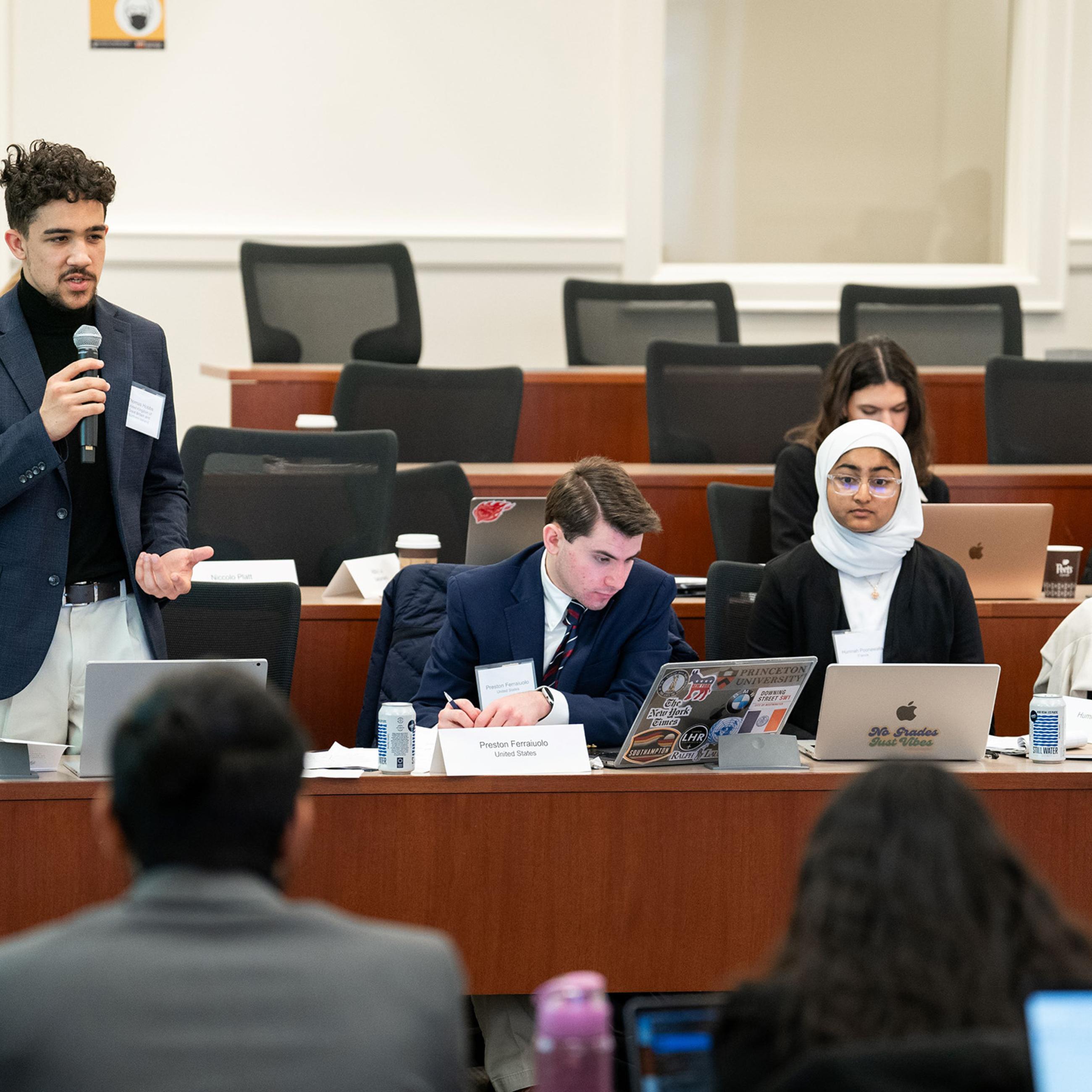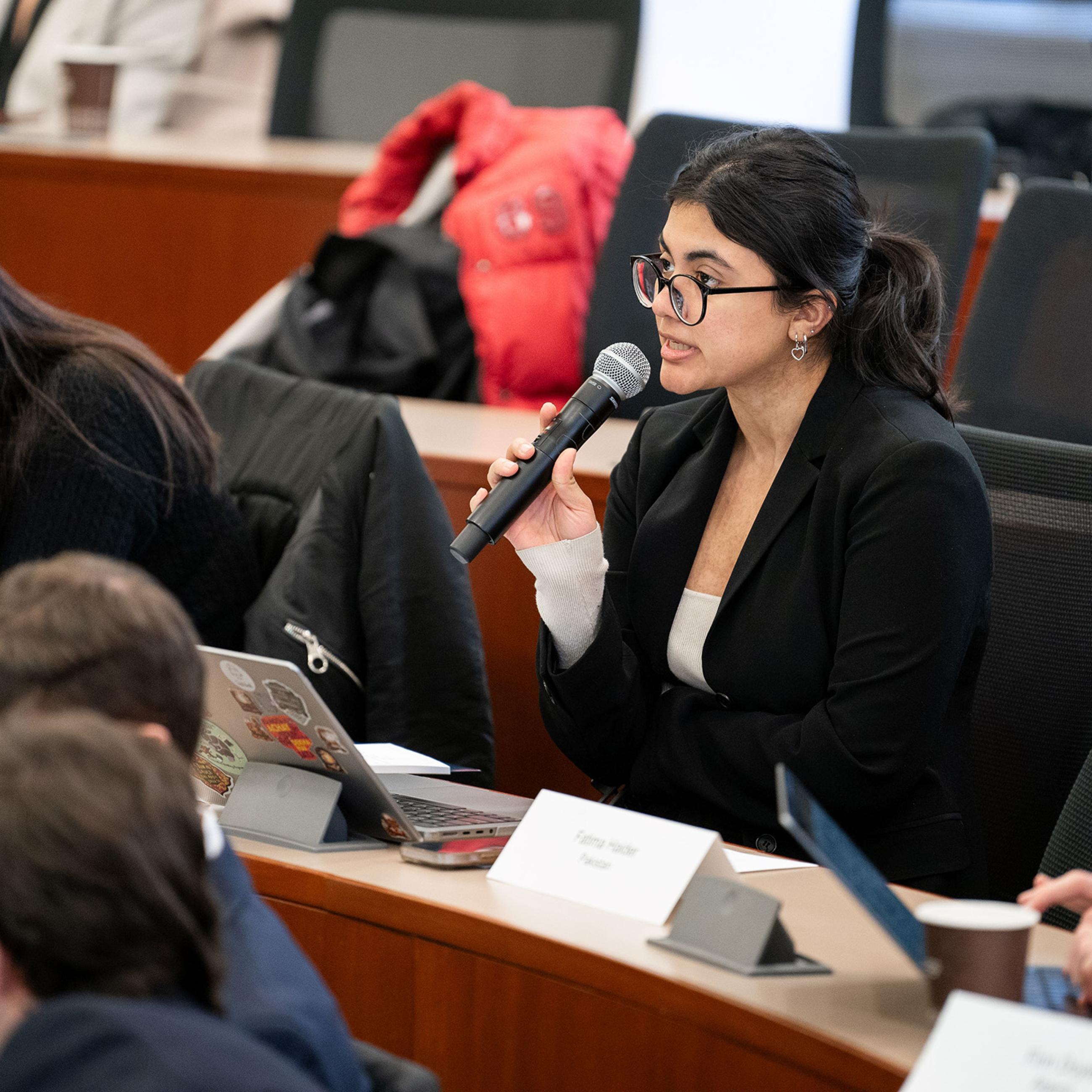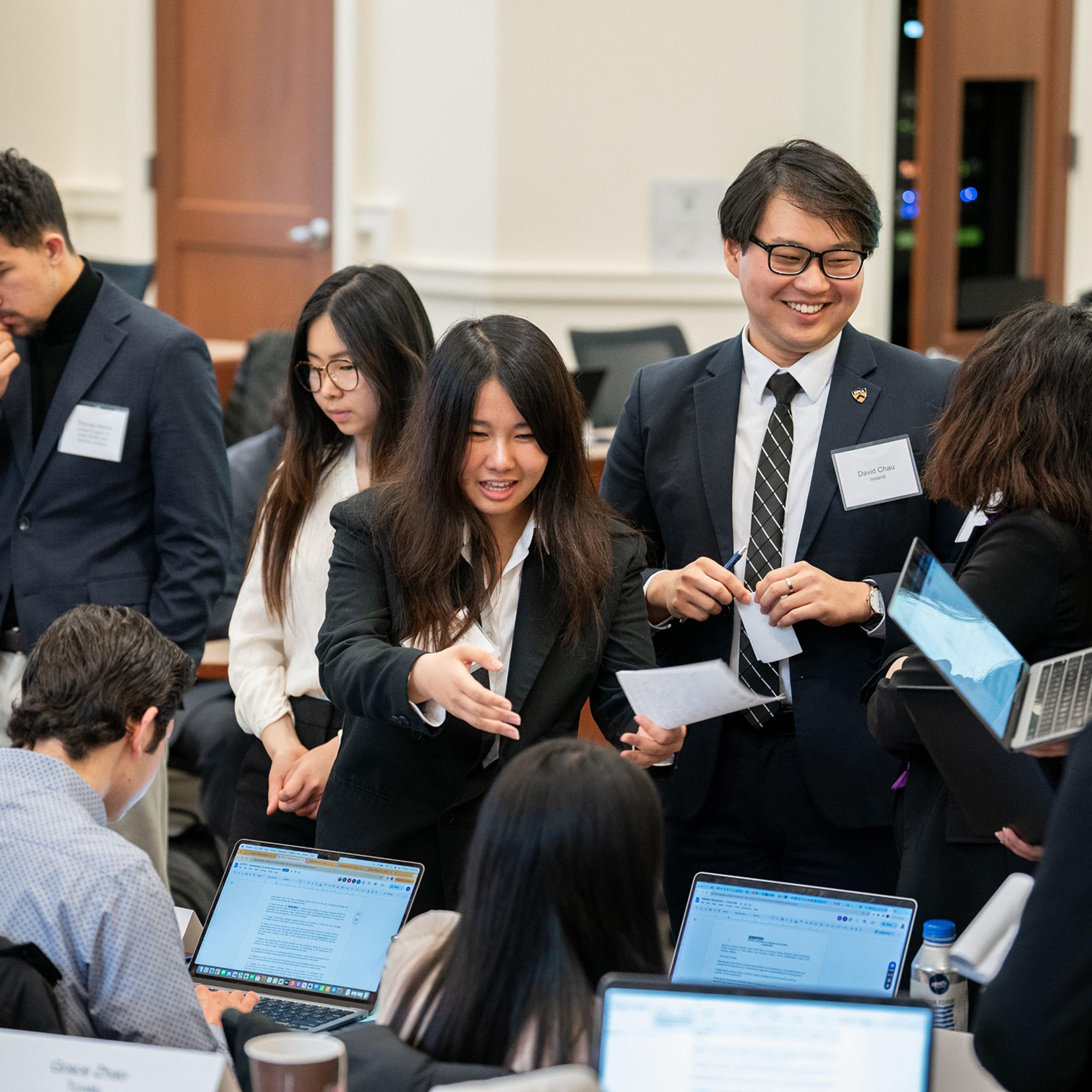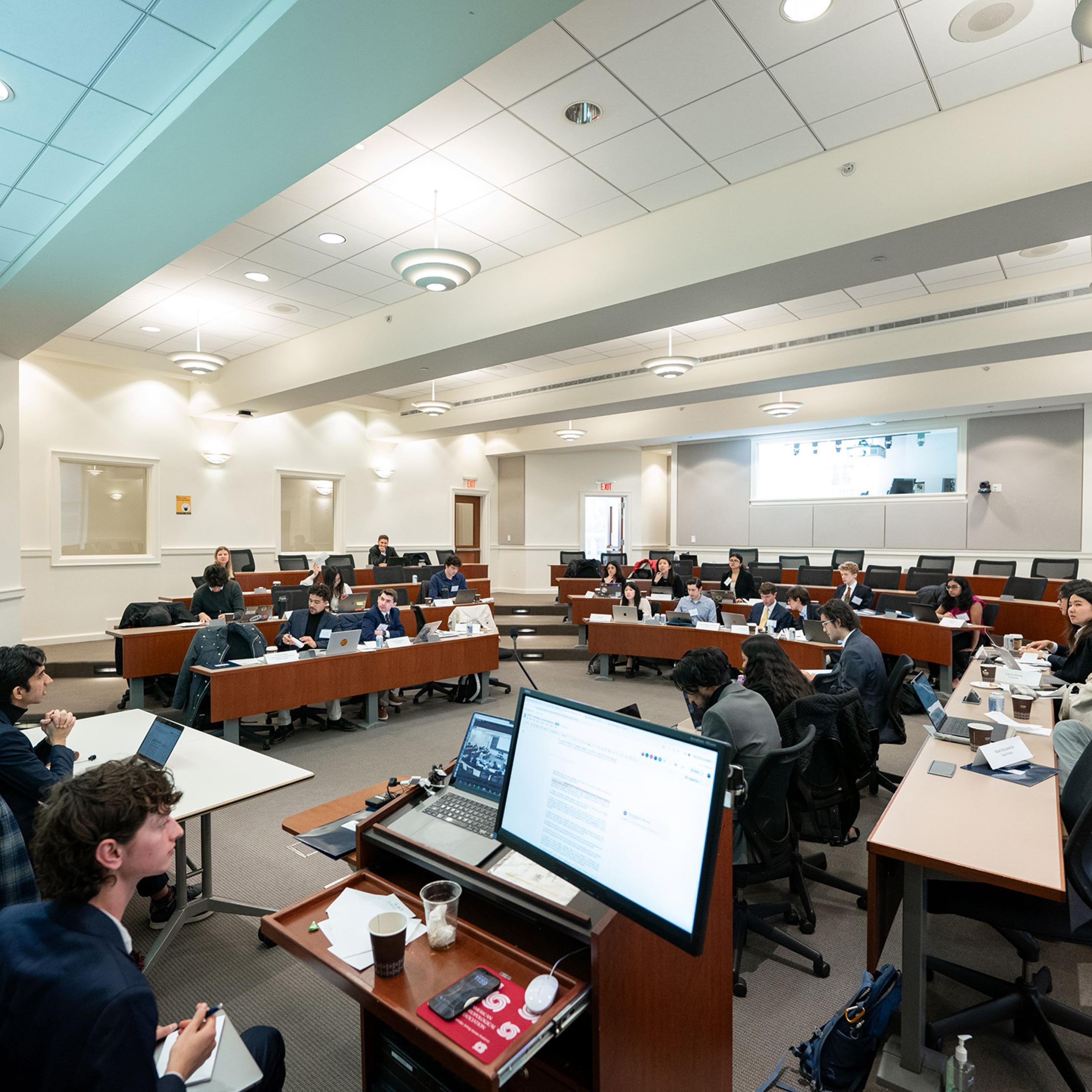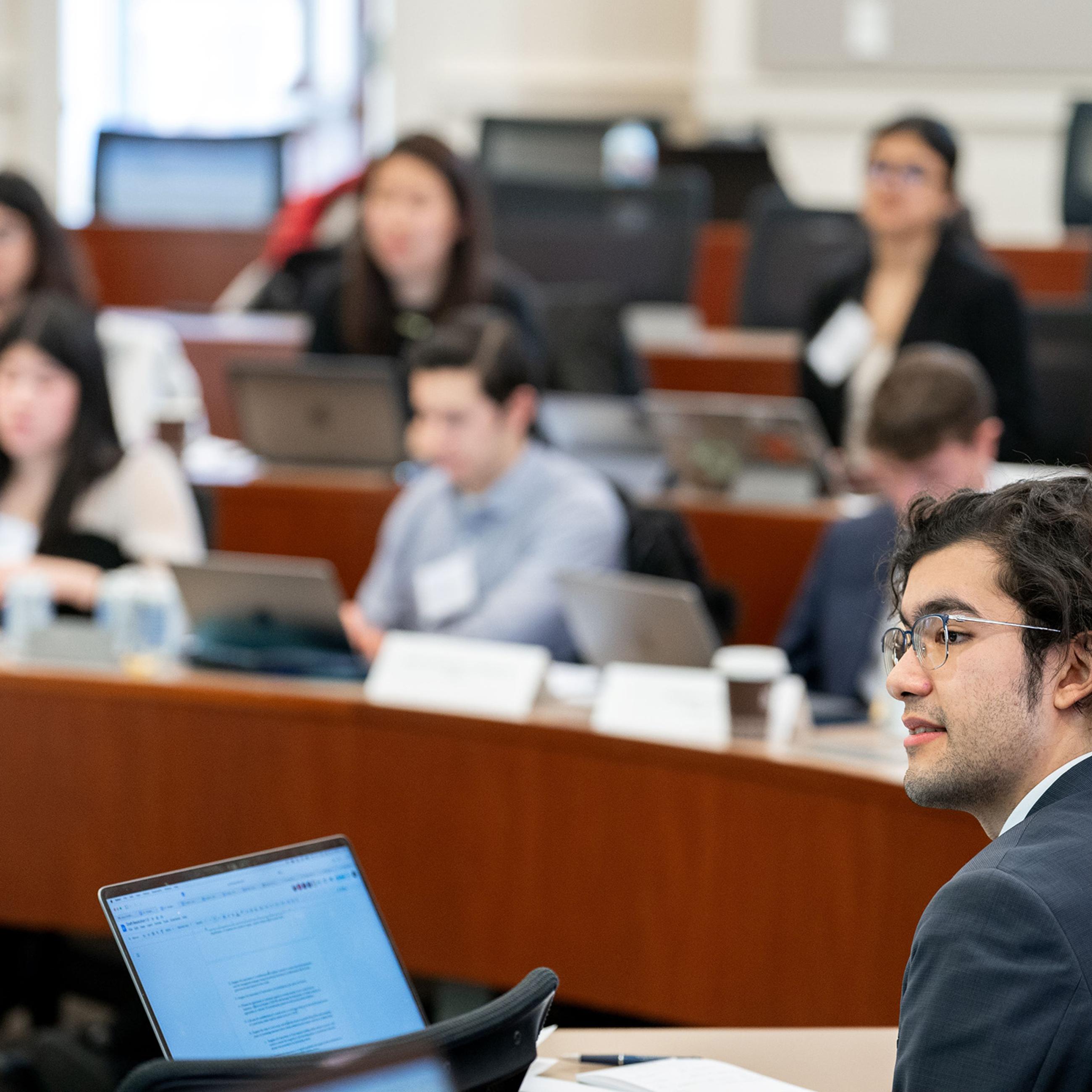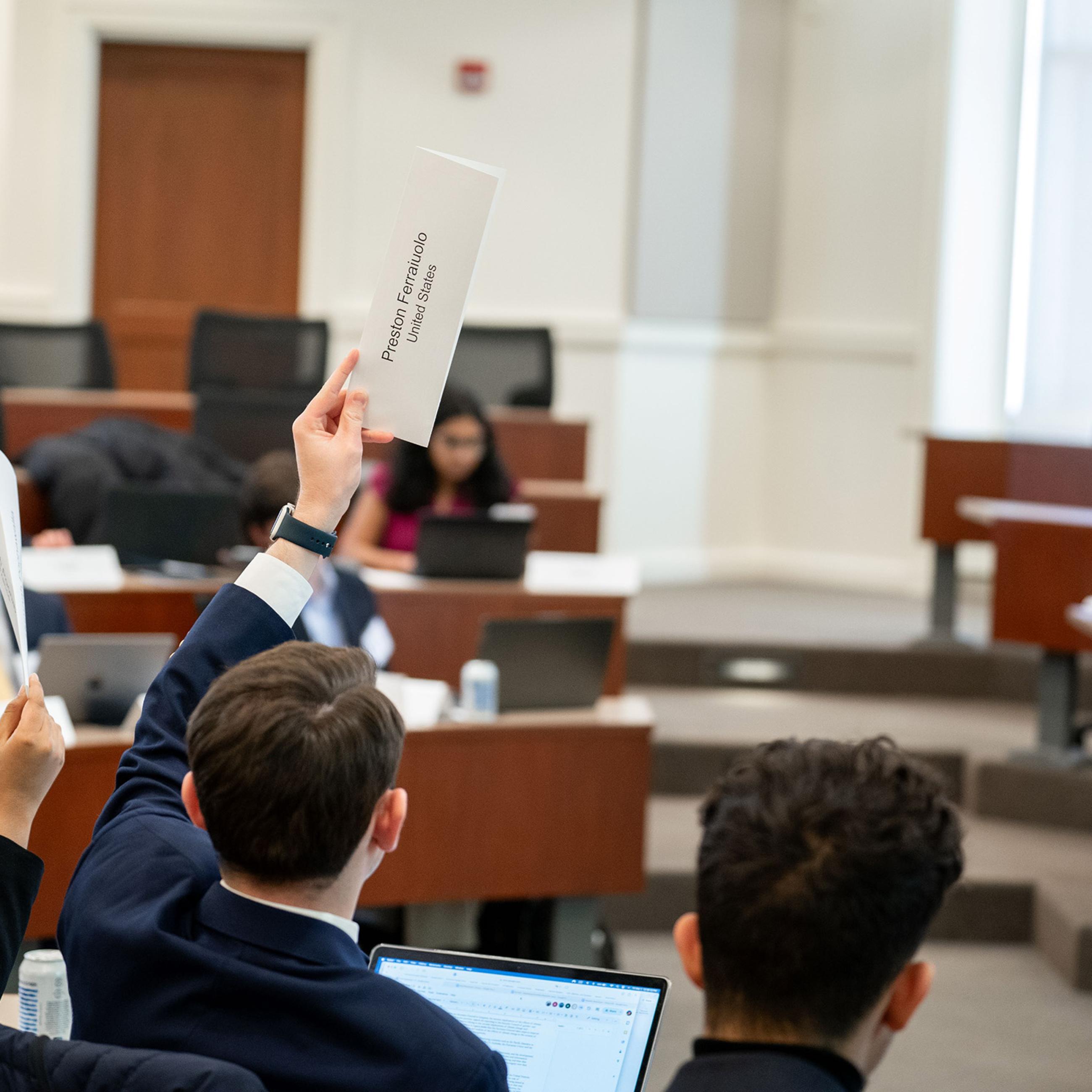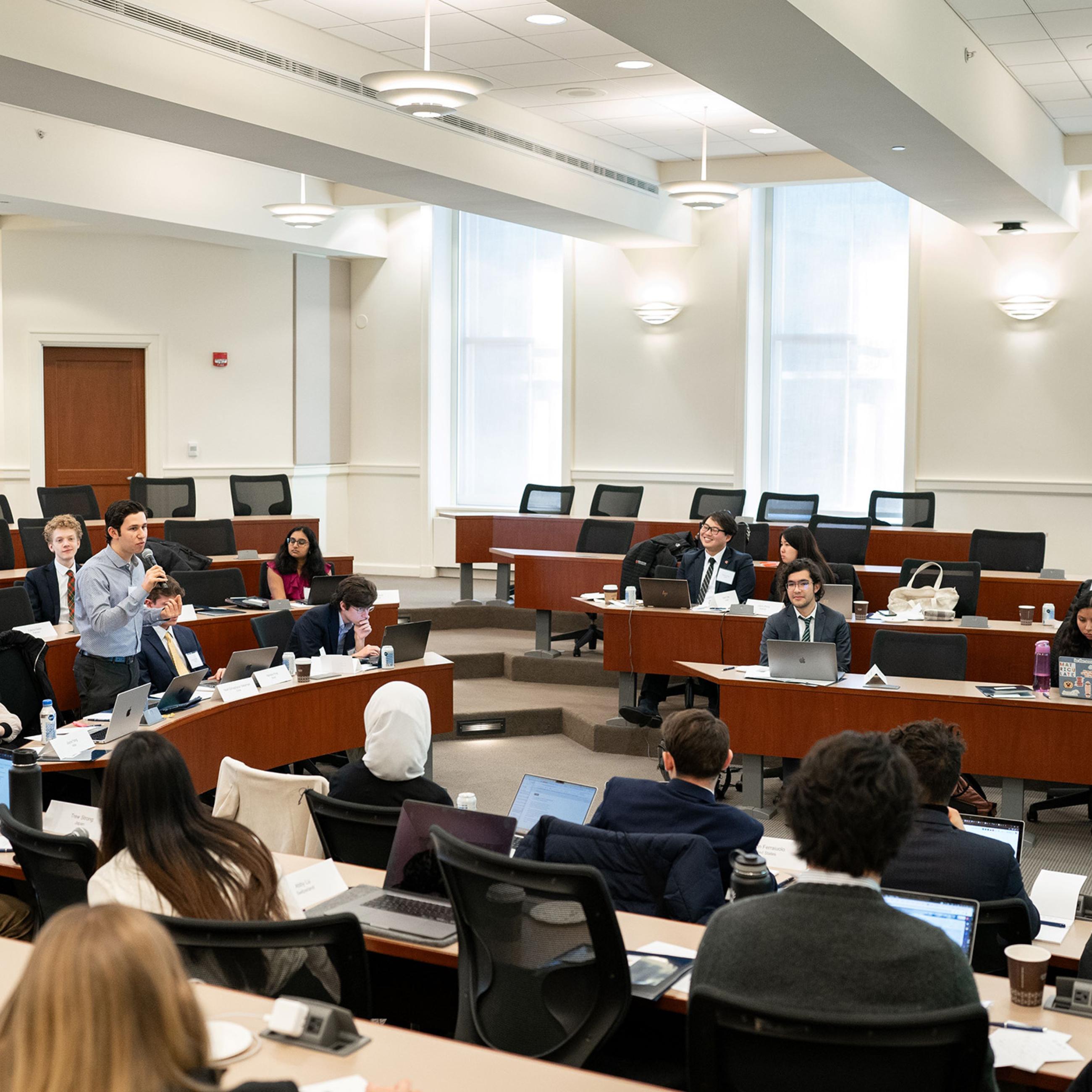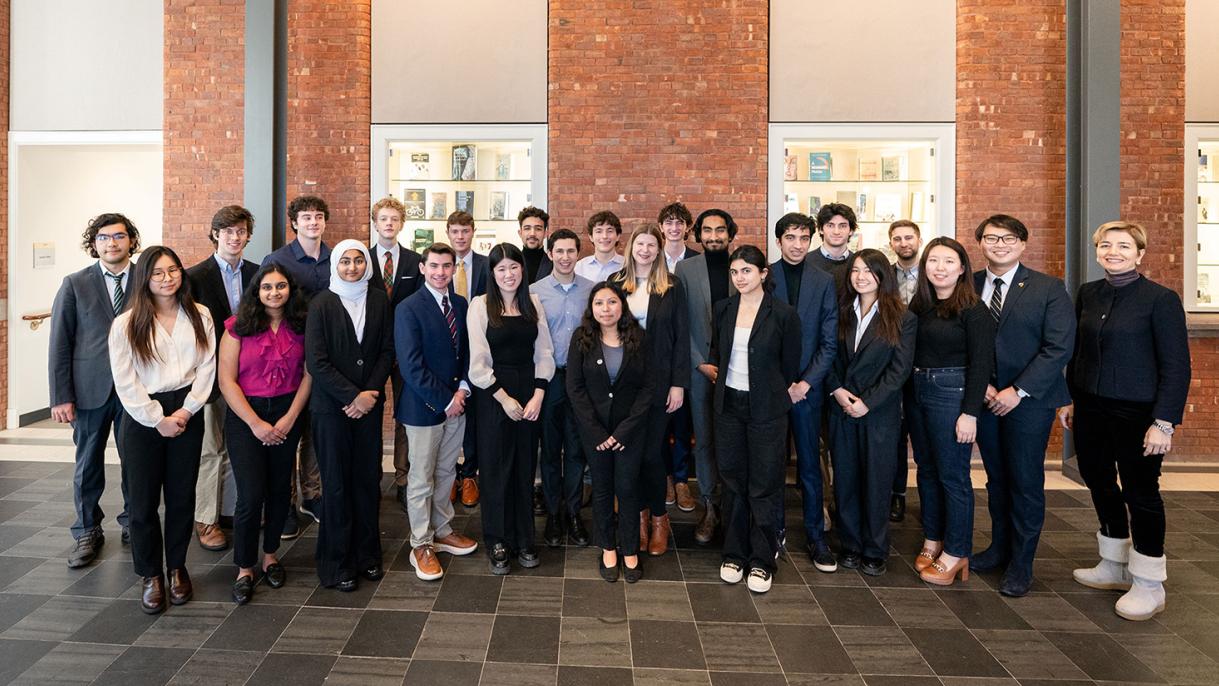

Student Simulation Showcases How U.N. Veto Initiative Can Increase Transparency and Accountability
Princeton SPIA’s Liechtenstein Institute on Self-Determination (LISD) hosted diplomats, University faculty, and undergraduates for its second student-led simulation exploring the future of a more accountable and more transparent United Nations.
Charges of insufficient global representation, particularly of the Global South, have followed the U.N. and the powerful Security Council (UNSC) since the end of the 20th century. Calls for change have only intensified in recent years, as the five original Permanent Members of the Security Council — China, France, Russia, the United Kingdom, and the United States — wield sole veto power over the primary crisis-management apparatus of the U.N. The veto feature, critics argue, lends disproportionate power to governments representing only one-quarter of the world’s population.
The most meaningful recent U.N. reform is the Veto Initiative, mandating that the General Assembly (UNGA) meet whenever at least one of the five Permanent Members of the UNSC casts a veto. The resolution encourages the UNSC to submit a report explaining the use of the veto ahead of the UNGA meeting. At the meeting, the UNGA debates the veto, and the member or members that cast it are invited to justify its use. Over time, proponents hope that the Veto Initiative meetings may change the relationship between the General Assembly and the Security Council, crafting a more accountable UNSC and a more transparent U.N.
Participants in the LISD Veto Initiative simulation gathered on March 1 to test-run the initiative and explore opportunities for reform and scenarios in which the Veto Initiative could result in the passage of a General Assembly resolution. This year’s iteration simulated a vetoed Security Council resolution on climate security, testing how the General Assembly could transition from debate on the vetoed resolution to resolving differences between member states on the underlying issue.
“It has been thought-provoking to observe how states in the simulation react to the casting of a veto,” said T.J. Eyerman ’26. “This year, we noticed a notable shift in dialogue away from the veto and climate security towards broader issues such as the lasting impact of colonialism.”
Of the three General Assembly resolutions that were proposed, one passed after a major diplomatic breakthrough led by the United States and its allies. The final text of the resolution, however, reflected the compromise and controversy necessary to secure General Assembly support, including a clause “recogniz[ing] the importance of hydrocarbons for development now and in the future” that reflected negotiations with Saudi Arabia and the United Arab Emirates.
“The simulation really highlighted the power of compromise in multilateral affairs. The Veto Initiative transformed what would have been a concluded debate into a robust discussion that allowed actors and coalitions from Tuvalu to Ireland to make their voices heard.”Nolan Musslewhite ’25, who represented Saudi Arabia in the simulation
“Our simulations give experts and practitioners a chance to observe what a debate about a resolution might look like in this context,” said Barbara Buckinx, a research scholar at LISD, who is the faculty organizer of the event. “I attended part of the real General Assembly meeting last week and was struck by how accurately our students had represented their states a few days earlier. It also left me feeling very optimistic about the reform potential of the Veto Initiative.”
Buckinx and her team have published the results of the second simulation. It is available here.


